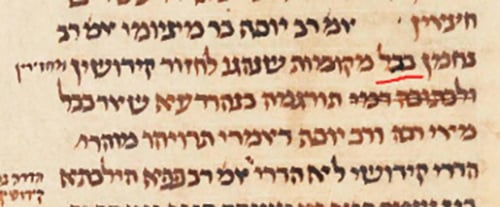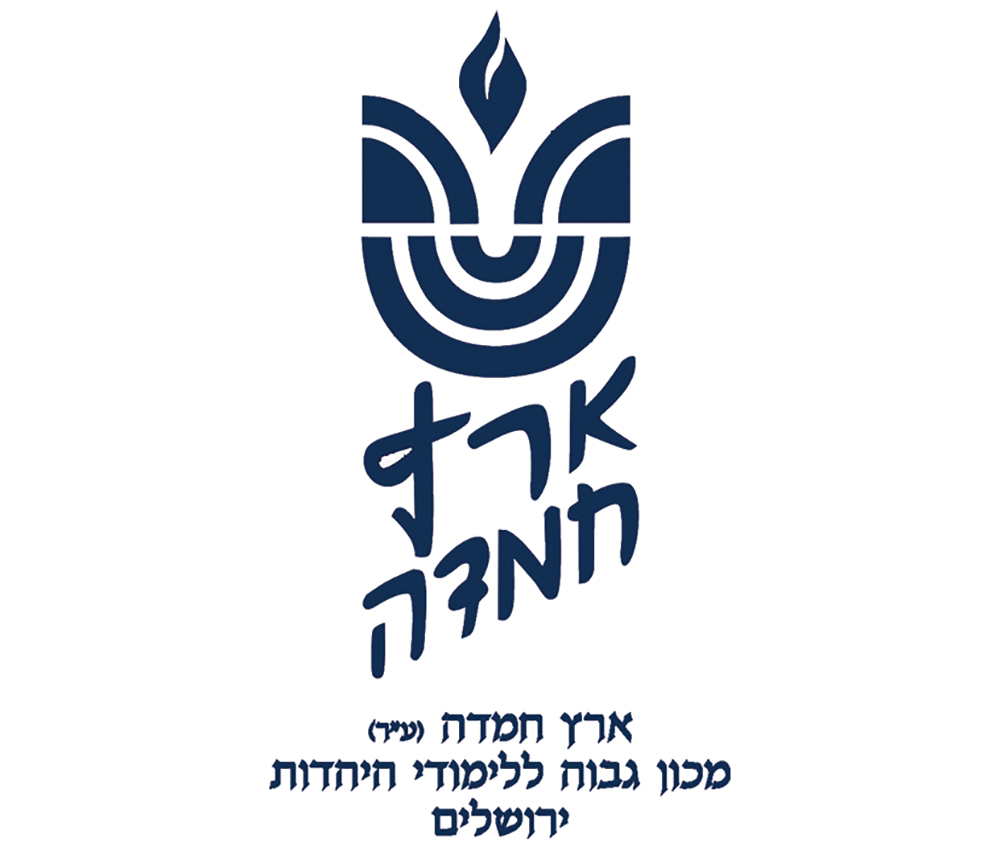
In Bava Batra 145a, Rav Yosef bar Minyumi quotes Rav Nachman (bar Yaakov). Minyumi is the same as Binyamin. /b/ and /m/ are from the same place of articulation, namely “bilabial” (using both lips), and so occasionally switch off. Consider that Bombay and Mumbai are names for the same place.
He frequently quotes Rav Nachman throughout Shas1, and once (Gittin 71a) quotes Rav Sheshet. He can speak to Rav Nachman’s true intent. Thus, in Ketubot 100b, some students misunderstood Rav Nachman’s statement that they never made a document of inspection in Nehardea (where his academy was located), thinking this was because the Sages there were all experts in appraisal. Rav Yosef bar Minyumi tells them that Rav Nachman explained the reason to him personally, that there was local disdain for people who leapt to purchase the property of someone in trouble. This leads the Talmudic narrator to propose a resolution to a local contradiction in the sugya, that one source deals with a place (rather than a time) that they announce versus do not announce—כָּאן בִּמְקוֹם שֶׁמַּכְרִיזִין, כָּאן בִּמְקוֹם שֶׁאֵין מַכְרִיזִין.
Similarly, in Eruvin 76b—without using the phrasing לְדִידִי מִיפָּרְשָׁא לִי מִינֵּיהּ דְּרַב נַחְמָן—he corrects students’ misperception of Rav Nachman’s statement about a ladder being unnecessary to join to areas to be considered a single residence.
Another potentially relevant source: he quotes Rav Nachman in Eruvin 45a that בבל, Babylonia is considered like a town near the border. This is qualified, perhaps by the Talmudic narrator, thusly: וְתַרְגּוּמָא: נְהַרְדְּעָא—that בבל refers particularly to Nehardea. We may add: this is because Rav Nachman presided over Nehardea academy.

Our Sugya
Now back to Bava Batra 145a. Rav Yosef bar Minyumi quotes Rav Nachman that בְּכׇל מָקוֹם שֶׁנָּהֲגוּ לְהַחְזִיר—מַחְזִירִין, “in every place that they are accustomed to return (the betrothal money when she dies before nuptials), they return it.” He—or the Talmudic narrator—qualify this: וְתַרְגּוּמָא: נְהַרְדְּעָא, that he refers specifically to Nehardea. The Gemara then asks, שְׁאָר בָּבֶל מַאי—“What about the rest of Babylonia?” Rabba and Rav Yosef both say that the presents are returned but the betrothal money is not returned.
This textual variant was established for us by Rashbam, who wrote נראה בעיני דה»ג אמר רב יוסף בר מניומי אמר רב נחמן בכל מקום שנהגו להחזיר מחזירין. היכא דמתה אשה. That is precisely what we have in our printed texts. I don’t see Rashbam quote any Gemara that includes וְתַרְגּוּמָא נְהַרְדְּעָא, so I don’t know if it should be included.
According to this established text, Rav Nachman himself restricted it to “every place they are accustomed,” and the only place which is so established is Nehardea. Therefore, Rabba and Rav Yosef—both of Pumbedita academy—are not really arguing. They deal with the rest of Babylonia, where no such custom was established.
However, the very reason Rashbam weighs in is to reject another girsa, which has בבל—“Babylonia,” instead of בכל—“in all.” The breakdown of variants follows: “In all” is found in Vilna, Venice and Pesaro printings, and in Munich 95 and Escorial manuscripts. “Babylonia” is found in Paris 1337. Meanwhile, Florence 8-9 and Hamburg 165 both originally had “Babylonia,” but this was overwritten by a scribe to be “in all.” Vatican 115b has fuzzy text due to similar overwrites, and ends up with just בל.
I expect that בבל is original. First, why should בכל be there at all? The baraita at the bottom of the previous amud simply stated מָקוֹם שֶׁנָּהֲגוּ לְהַחְזִיר קִדּוּשִׁין —מַחְזִירִין, מָקוֹם שֶׁנָּהֲגוּ שֶׁלֹּא לְהַחְזִיר—אֵין מַחְזִירִין with no word בכל, and means the same thing. Second, there is Eruvin 45a, where the same person quoted Rav Nachman about בבל, and the same words, וְתַרְגּוּמָא נְהַרְדְּעָא, appeared. We are translating “Babylonia,” not “every place that has this custom.”
Furthermore, I wonder whether it is the Talmudic narrator, who has a harmonizing tendency, who restricts Rav Nachman to Nehardea and therefore not in disagreement with Rabba and Rav Yosef. Yes, the Talmudic narrator can point to Ketubot 100b to demonstrate that Nehardean practices are sometimes different, because of cultural attitudes. But, perhaps Bavel to Rav Nachman is really Bavel—as opposed to, e.g., the earlier baraita from the land of Israel—that suggested local practices differed.
If so, the question of שְׁאָר בָּבֶל מַאי before introducing Rabba and Rav Yosef would also be spurious, and these Amoraim are actually arguing. Rashbam doesn’t cite it, and it’s missing in Vatican 115b.
One of the principles of textual criticism is “lectio brevior potior—the shorter reading is stronger.” Here, the shorter reading omits the question about the remainder of Bavel. Still, it’s often a judgment call when to apply this principle, and in this case I’m not entirely certain. If they do argue, I’m not sure how we decide between these third-generation Amoraim, and between Nehardea academy and Pumpedita academy.
Except, of course, that we have later generations weighing in. In the next statement, fifth-generation Rav Pappa of Naresh academy, who is Rava’s student (Rava being Rav Nachman’s student but operating as one of the heads of Pumbedita academy) says the halacha—whether in case of retraction or her death—is exactly as enunciated by Rabba and Rav Yosef. Ameimar also weighs in to argue. Even later, sixth-generation Rav Ashi weighs in to reject Ameimar, and, even later, the Savoraic Talmudic narrator weighs in to reject his rejection.
Rabbi Dr. Joshua Waxman teaches computer science at Stern College for Women, and his research includes programmatically finding scholars and scholastic relationships in the Babylonian Talmud.
1 Because of space considerations, here’s a list, textually and somewhat topically organized: Brachot 23a; Yevamot 101b and its 107b parallel; Bava Metzia 32a; Ketubot 81b; Gittin 9a, 45b, 70b; Bava Kamma 97a with Bava Metzia 64b; Bava Metzia 16b; Bava Batra 132a, 145a, 148b, 159a; Shevuot 47a; Chullin 13b, 46a, 48a.








